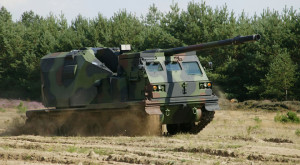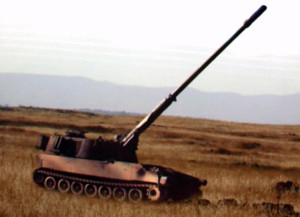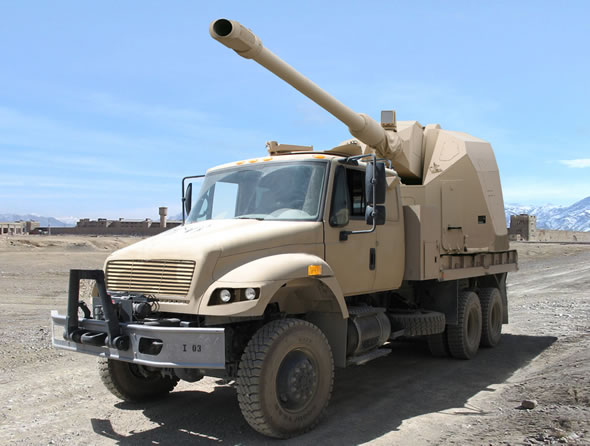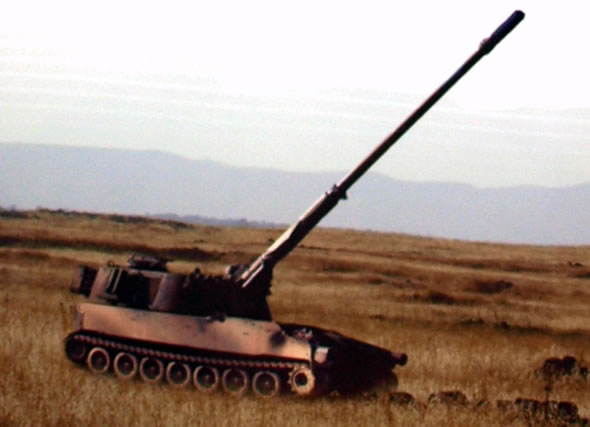
IMI has teamed with the German company Rheinmetall Defence to offer an upgrade package for the Israel Defense Forces M-109A5 self propelled howitzers. The modular package will enable the IDF to introduce a list of long awaited upgrades, required to maintain the M109 in service for 40 years. The upgrade, known as M109I7 ‘Spark’ comprises the introduction of a longer, modern 155/52 caliber barrel, with improved muzzle break and bore evacuator, sliding breech and automated loader or loader assist system (Automatic Munition Flow or AMF system), reducing the crew from six to only 3-4 gunners. The upgrade package will also include the Combat NG artillery C3 system and autonomous navigation and gun laying system, enabling the cannon to operate autonomously. If the IDF will deploy the new TopGun guided projectiles (currently under development at IAI), the SPG will also be able to fire such projectiles at very high accuracy.

The L52 cannon has seen extensive combat use in Afghanistan in recent years. The upgrade has been implemented with the M109L52 design back in 2002, designed to fit the requirements of armies that did not budgets complete replacement of the M109 artillery. The system employs significant elements of the German PzH2000 program, and offers 90% of its capabilities, but costs only 20% of that gun. This design has been implemented with the M109 A3GE model fielded with the reserve components of the German Army, and phased out in 2007, as these units were disbanded. These SPGs were eventually transferred to Greece.The upgrade will also include a new powerpack, comprising a 460 hp engine, replacing existing 405-440 hp Detroit Diesel types.
The M109I7 can be fitted with the L39 or L52 guns, enabling maximum firing range of 30 to 40 kilometers with standard projectile and base-bleed ammunition. The gun’s maximum effective range increases to 42 km when firing improved Extended Range Base ERFB base-bleed projectiles and exceeds 52 km when firing the rocket-assisted V-LAP projectile. Equipped with autonomous firing capability, the M109I7 can ‘shoot and scoot’ within five minutes, thus improving survivability rate in high intensity combat. A crew of 3-4 can fire three rounds in 15 seconds, or six rounds in one minute. Among the advanced firing modes enabled with this SPG are ‘multiple round simultaneous impact’ (MSRI), enabling up to five rounds to hit the target zone at the same time by firing projectiles in different trajectories at the same target, all timed to impact at the same time.
When on the move, the system can carry out a fire mission 60 seconds after coming to a halt, and can move into a new fire position just 60 seconds later. This gives the vehicle’s 3- or 4-man crew the edge in evading detection and enemy counter-battery fire.
The M109I7 howitzer upgrade program is not the only L52 implementation evaluated by the IDF. The artillery corps also evaluates the Autonomous Gun Module (AGM) proposed by the german company KMW, as a possible replacement for the M-109. However, fielding a new artillery platform at the numbers required by the IDF represents financial burden the IDF will be hard to accept, especially as it already plans to field new, highly accurate 160mm ACCULAR short range mobile rocket systems. The AGM represents a bold departure from the manned artillery systems, leaping forward into the field of ‘intelligent weapon systems’. The AGM implements a 12.5 ton unmanned turret mounting the 155 mm / L52 howitzer, which can be deployed on stationary positions, tracked or wheeled platforms, including Merkava tracked chasis, offering commonality with other IDF platforms. The AGM module is usually supported by one or two soldiers.


















